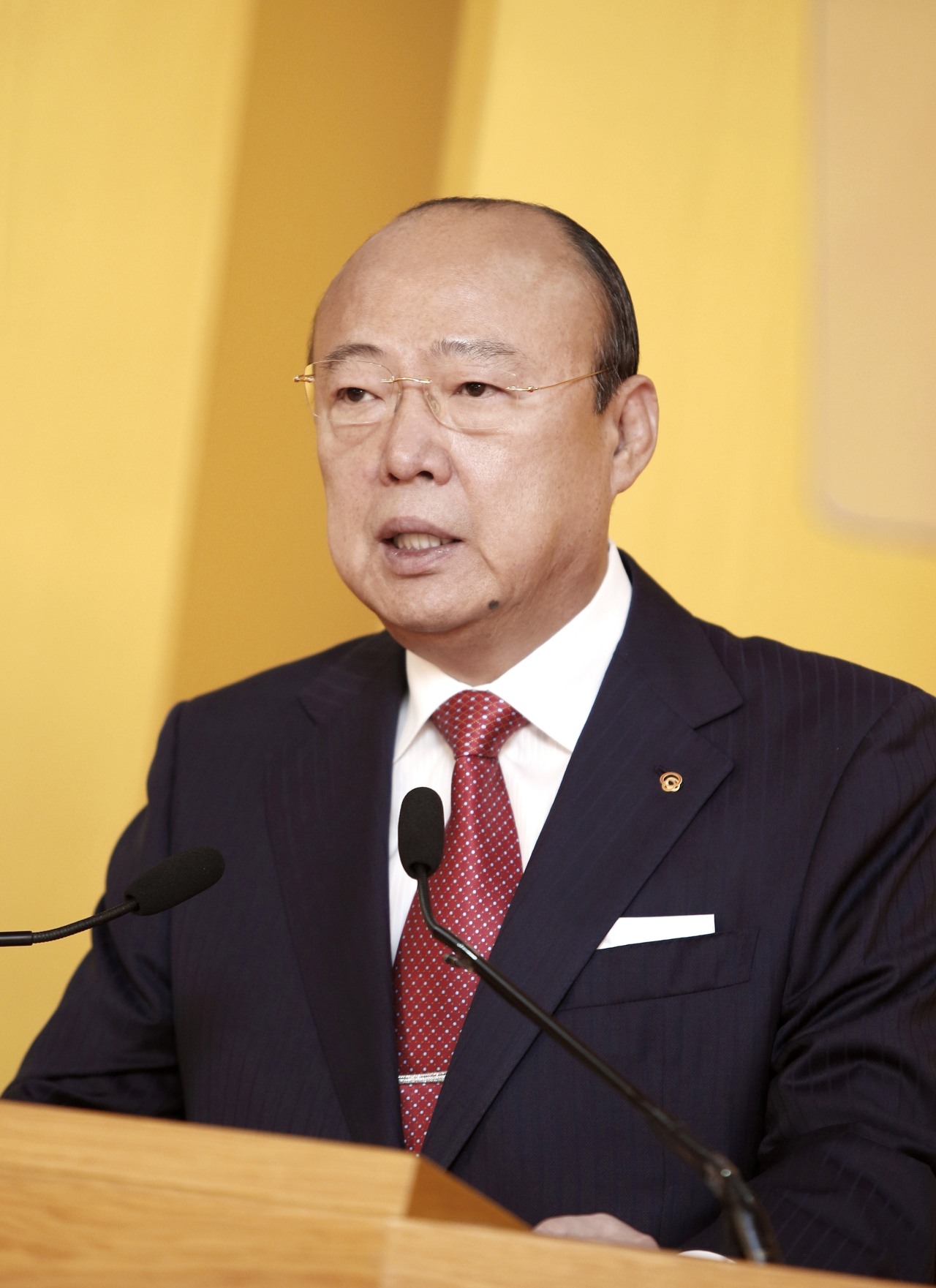Hanwha, a living testament to tycoon’s era in Korea
Over four decades under charismatic Kim Seung-youn, conglomerate’s assets have grown by 288 times
By Kim Byung-wookPublished : Aug. 19, 2021 - 16:00

In 2014, just 10 kilometers southeast of Baghdad, the capital of war-torn Iraq, hundreds of Hanwha Engineering & Construction workers were toiling away to build a new city worth $10.1 billion to provide new homes for some 600,000 Iraqis.
Far away from home and exhausted by the desert heat, the workers craved fresh flatfish sashimi, a cheap dish in South Korea but impossible to find in Iraq.
When Hanwha Group Chairman Kim Seung-youn heard the news, he ordered chefs to prepare flatfish sashimi for 600 people, loaded the food on his private jet and flew to the construction site by himself. On Dec. 8, 2014, Hanwha E&C workers enjoyed flatfish sashimi for dinner along with Kim in the middle of the desert.
The sashimi delivery is often cited as an anecdote that shows what kind of a leader Kim is. Charismatic and sometimes unorthodox, the chief highly values the trust and loyalty of his staff, treating employees as part of a family regardless of their ranks.
Such an approach, combined with his love for deals, has been behind the transformation of Hanwha Group, from a gunpowder manufacturer to a hotels-to-finance conglomerate now betting heavily on future energy and space.
On Aug. 1, the 69-year-old tycoon marked 40 years since taking the group’s chairmanship.
He was 29 years old when he took the helm after his father’s abrupt death in 1981.
A simple comparison of Hanwha then and now tells the story.
Total assets, which stood at 754.8 billion won ($641.5 million) at the time Kim took control, spiked to 217 trillion won. Sales skyrocketed to 65.4 trillion won from 1.1 trillion won in the same period.
The group had around 15 affiliates in 1981, but now has over 80 under its wing, ranking as the country’s seventh-largest conglomerate.
Behind such success, Kim’s cowboy spirit has played a part -- taking calculated risks backed by a skill set.
When Kim took over management, the domestic petrochemical business faced uncertainties amidst the maelstrom of the second global oil crisis. But Kim looked further ahead and carried out bold M&As in the sector, acquiring Hanyang Chemical and Dow Chemical Korea, which became Hanwha’s key growth engine.
Then came the 1997 Asian financial crisis. Hanwha Group’s debt soared to 13 trillion won, forcing Kim to sell off Hanwha Energy’s oil business and Hanwha Energy Plaza to Hyundai Oil.
Even amid the crisis, Kim maintained his philosophy of trust and loyalty. While negotiating terms with Hyundai Oil CEO, Kim offered to lower the sell-off price in exchange for not laying off a single employee. When deals came through, all 706 Hanwha Energy and 456 Hanwha Energy Plaza employees kept their jobs.
After the deal, Kim ordered the management to hire every last one of those who wished to return to Hanwha Group due to cultural differences with Hyundai Oil.
Following the financial crisis, Hanwha Group carried out a painful restructuring and reduced its number of affiliates from 37 to 17. The restructuring gave Hanwha Group seed money worth 1 trillion won for new investments.
In 2002, Hanwha Group acquired money-bleeding Daehan Life Insurance and turned it into Hanwha Life Insurance, which is worth 127 trillion won as of last year.
In October 2012, Kim predicted the global boom of the solar market and acquired a German solar manufacturer Q Cells. The company once ranked No. 1 in production capacity in 2008, but went bankrupt in April 2012 due to mounting challenges from cheaper Chinese solar products.
At the point of its acquisition, Q Cells was financially comatose, its accumulated operating losses worth $44.2 million. To revive Q Cells, Kim dispatched his eldest son and the de-facto heir of Hanwha Group Kim Dong-kwan. Now, Q Cells stands as the world’s No. 6 solar manufacturer by shipment with annual sales worth 3.7 trillion won as of last year.
In 2015, Hanwha Group surprised the industry with a mega deal that acquired four companies including Samsung’s defense manufacturing and petrochemical units. The acquisition of two defense units, Samsung Techwin and Samsung Thales, transformed Hanwha into the nation’s leading defense manufacturer with annual sales over 20 trillion won.
Based on Samsung Techwin, Hanwha Group formed Hanwha Aerospace and put five subsidiaries under it -- Hanwha Defense, Hanwha Systems, Hanwha Precision Machinery, Hanwha Power Systems and Hanwha Techwin.
Recently, Hanwha Aerospace made a strategic investment in Satrec Initiative, a local satellite maker which manufactured the nation’s first small satellite “Uribyeol 1.” Hanwha Group aims to shoot Satrec satellites into the orbit using Hanwha Aerospace’s rocket engines.
Meanwhile, Hanwha Systems is at the center of Korea’s urban air mobility industry, currently developing an air taxi prototype known as “Butterfly” and related flight and navigation ICT solutions.


![[Exclusive] Korean military set to ban iPhones over 'security' concerns](http://res.heraldm.com/phpwas/restmb_idxmake.php?idx=644&simg=/content/image/2024/04/23/20240423050599_0.jpg&u=20240423183955)




![[Pressure points] Leggings in public: Fashion statement or social faux pas?](http://res.heraldm.com/phpwas/restmb_idxmake.php?idx=644&simg=/content/image/2024/04/23/20240423050669_0.jpg&u=)

![[Herald Interview] 'Amid aging population, Korea to invite more young professionals from overseas'](http://res.heraldm.com/phpwas/restmb_idxmake.php?idx=644&simg=/content/image/2024/04/24/20240424050844_0.jpg&u=20240424200058)








